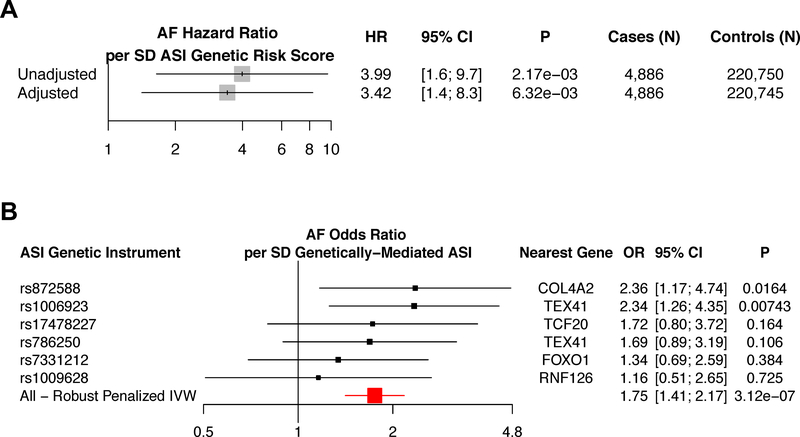Figure 1:
Mendelian randomization analyses between an arterial stiffness index genetic risk score and atrial fibrillation. A) Association of the ASI genetic risk score with incident AF was derived using individual-level data from the UK Biobank (225,636 total individuals, and 4,886 incident AF cases). Analyses are provided both unadjusted, and separately, adjusted by cardiometabolic risk factors (age, sex, smoking status, prevalent heart failure, prevalent coronary artery disease, prevalent hypertension, prevalent hypercholesterolemia, prevalent diabetes, heart rate, alcohol intake, and exercise frequency). B) Association of ASI genetic instruments, individually and combined, with the largest published multi-ethnic AF genome-wide association study (4) (588,190 total individuals, and 65,446 cases) using robust, penalized inverse-variance weighted 2-sample Mendelian randomization. Variant-level hazard ratios (A) and odds ratios (B) are reported per standard deviation of ASI instrumented by the genetic instrument.
AF = atrial fibrillation or flutter, ASI = Arterial stiffness index, HR = hazard ratio, IVW = inverse variance weighted

